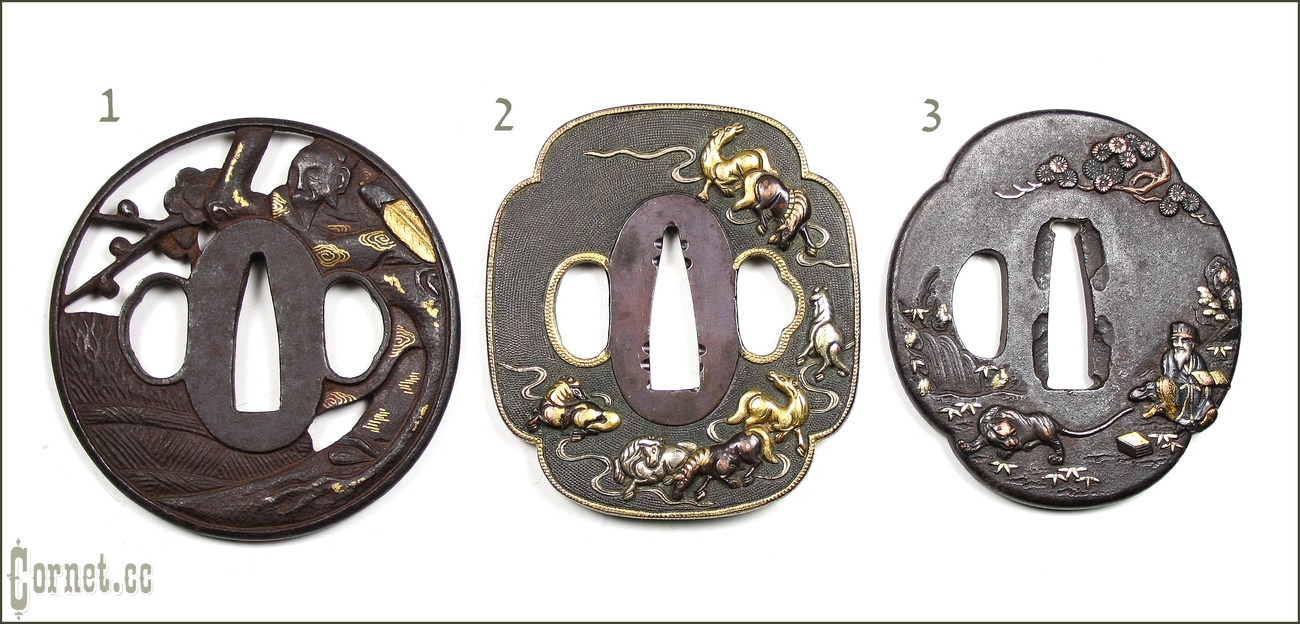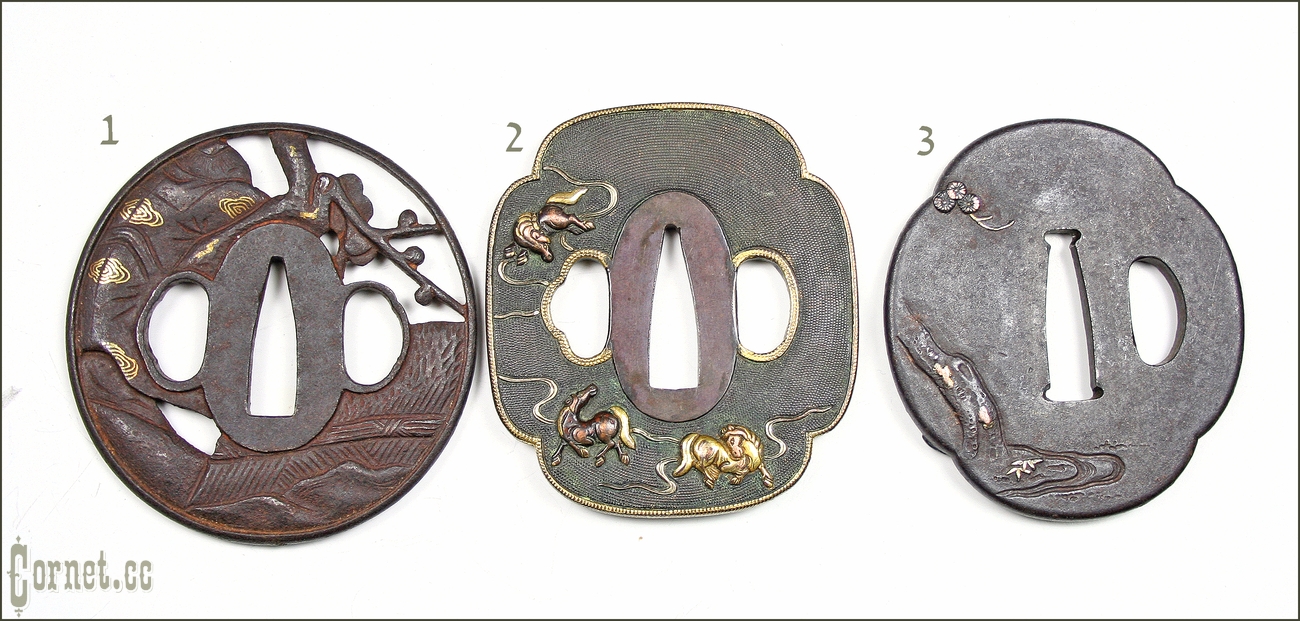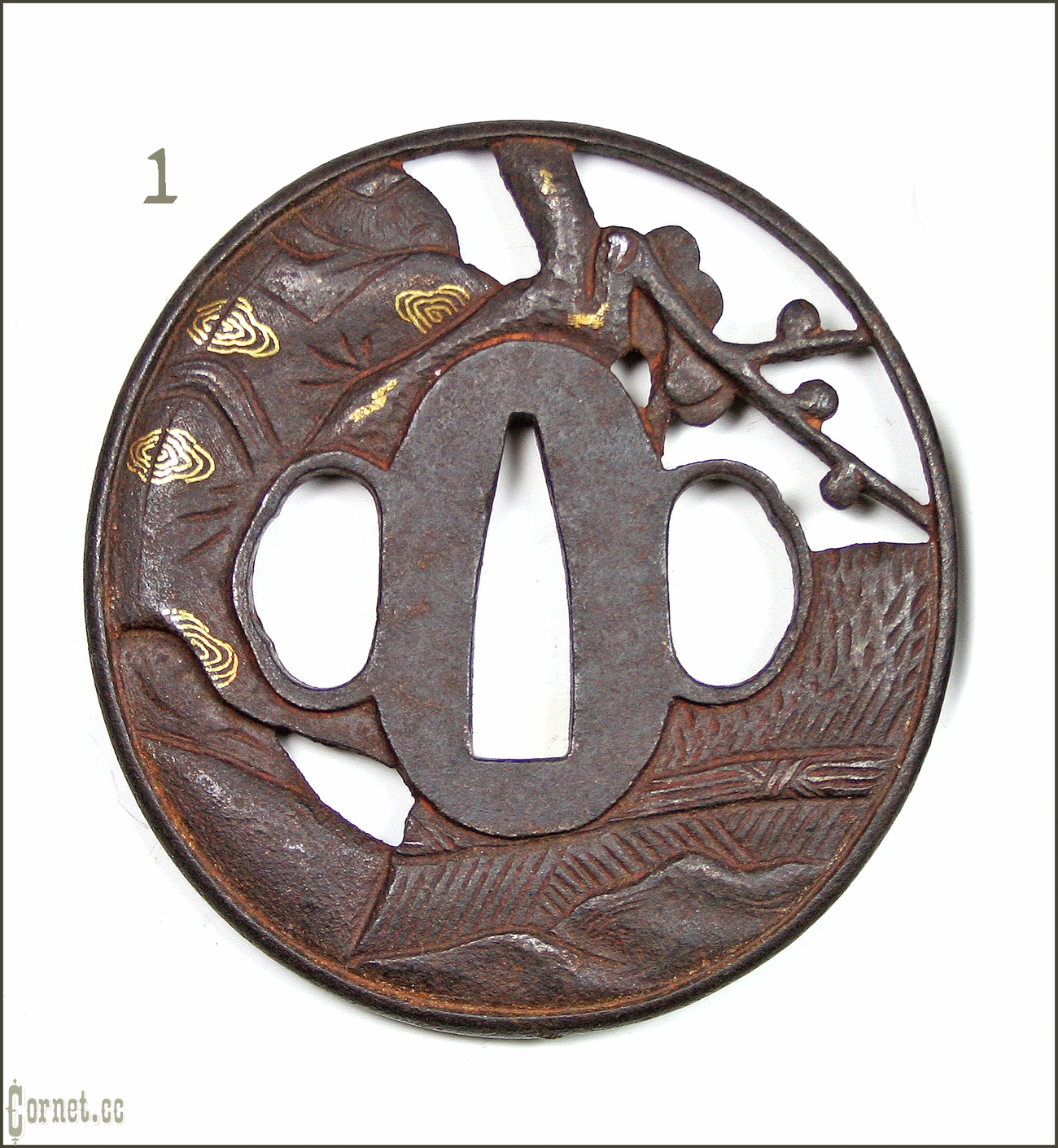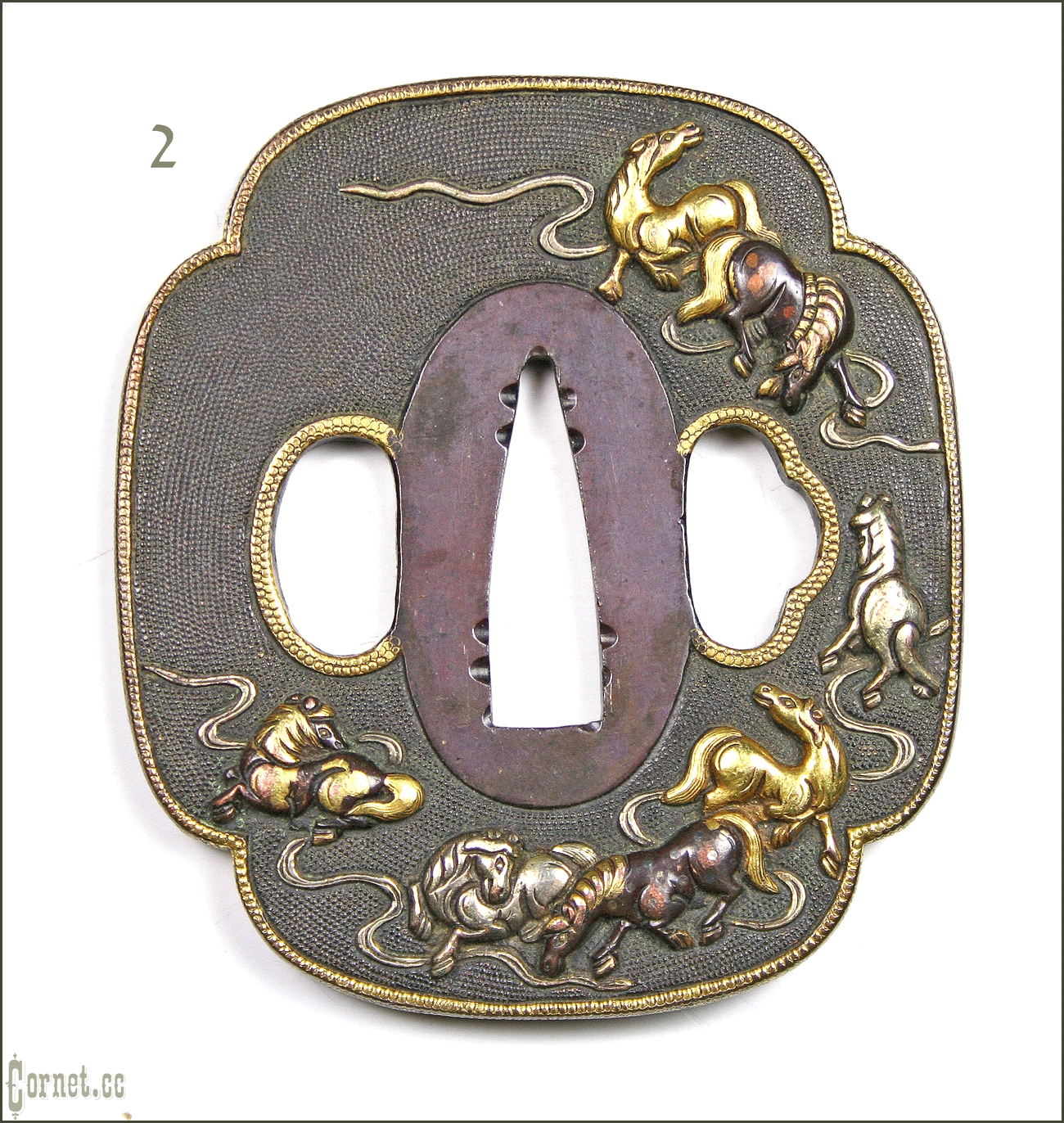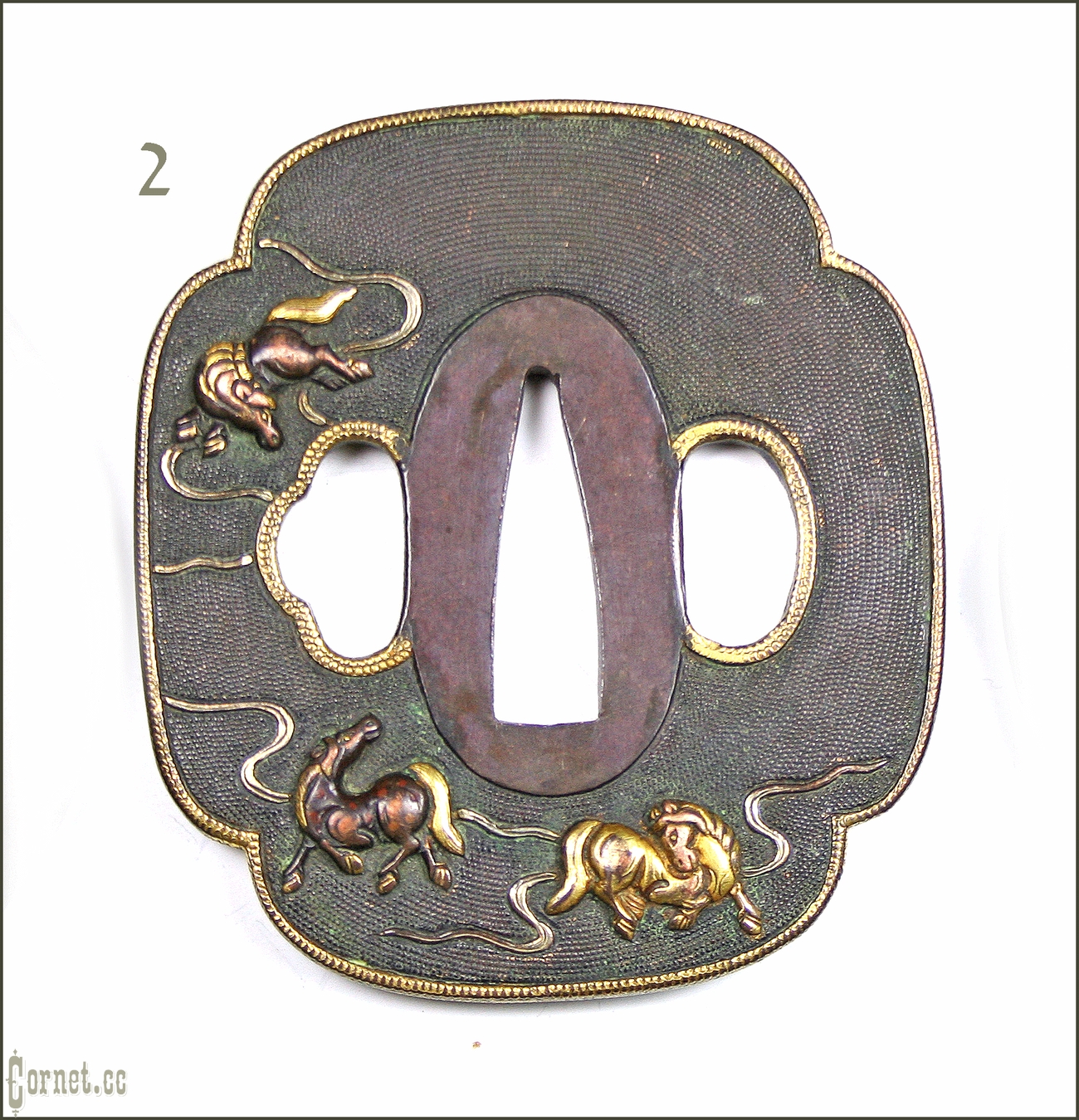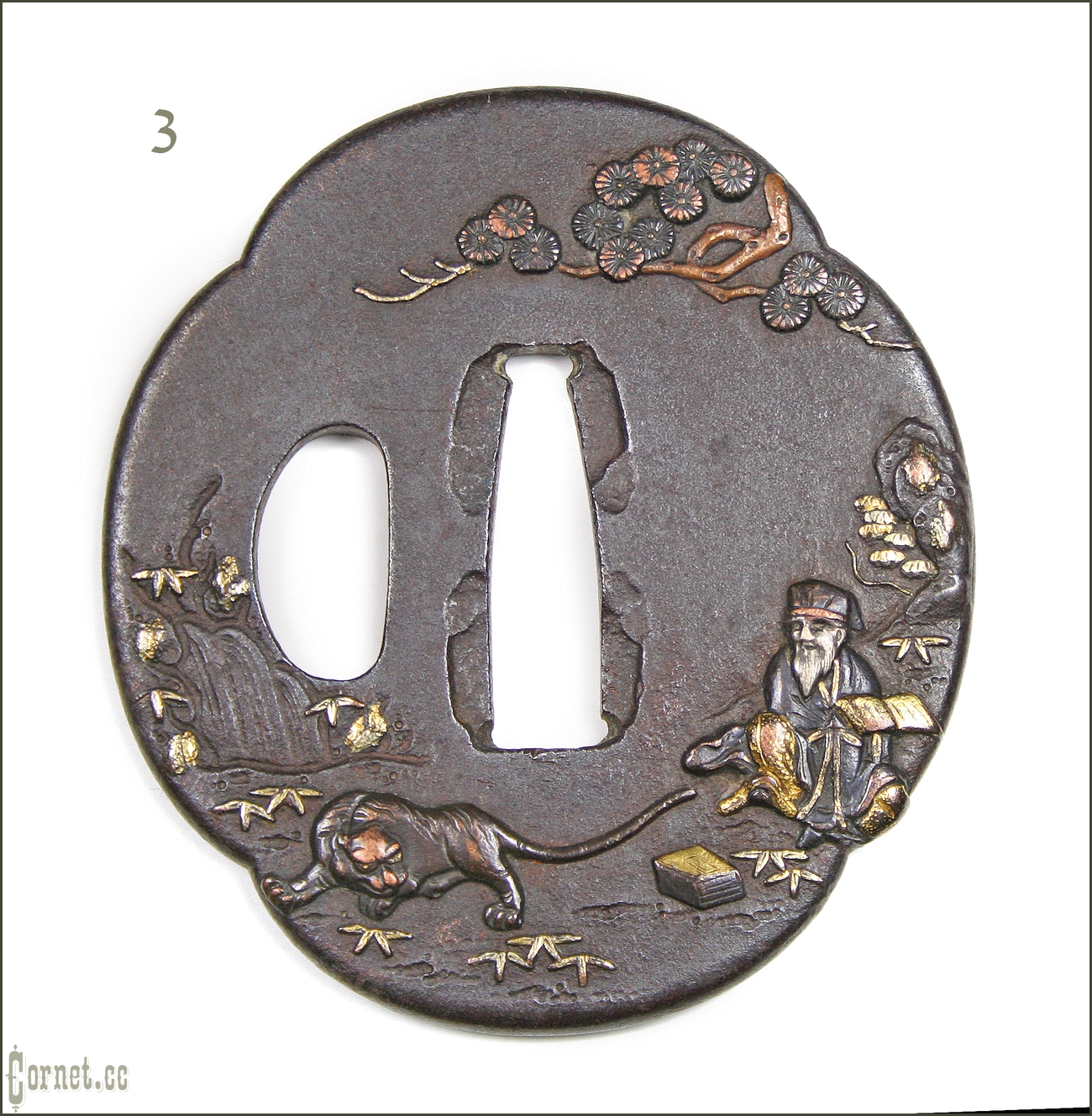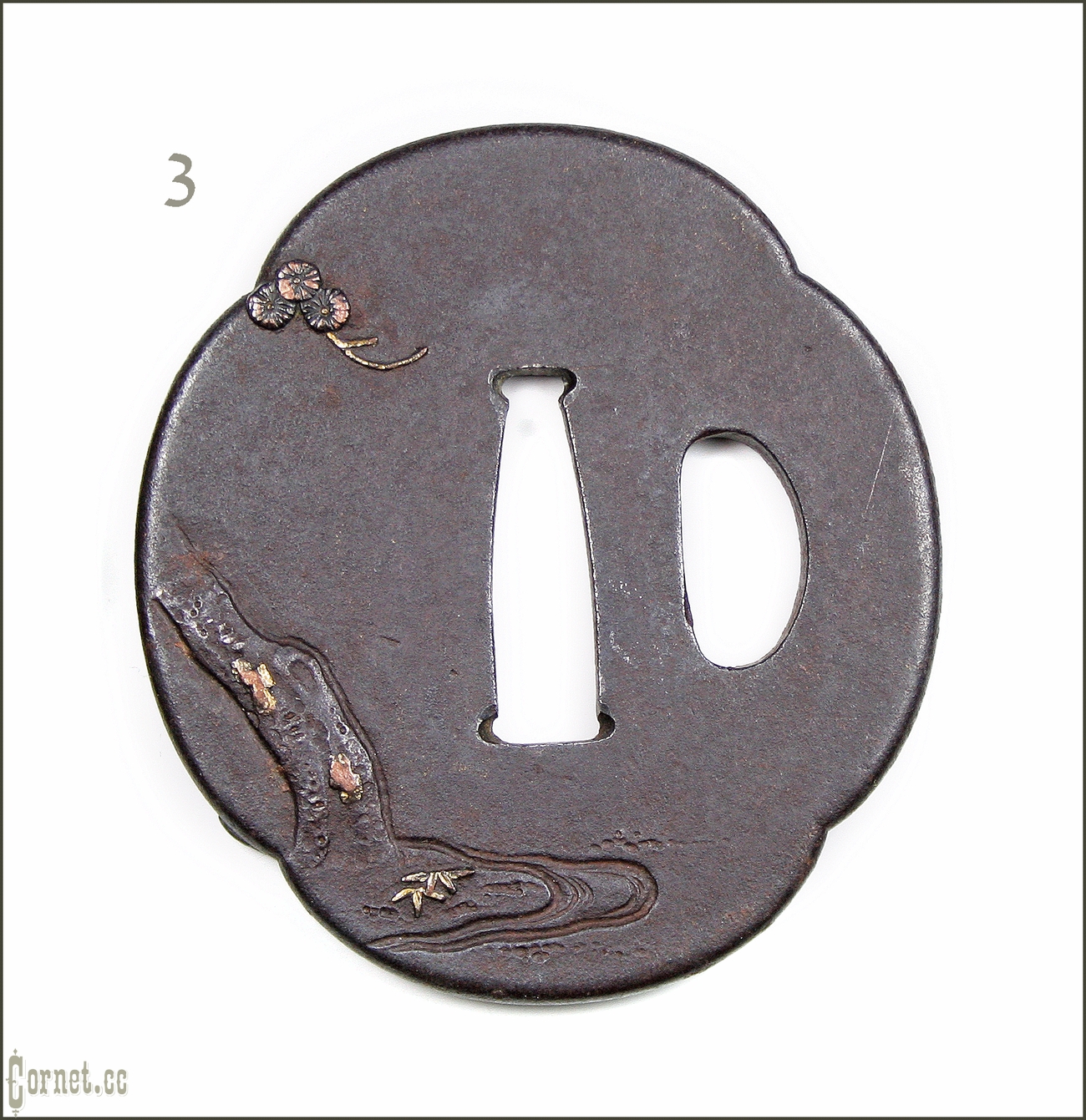№123017Tsuba
Japan. Tsuba of the Edo period (1603-1868). tsuba is an integral part of the Japanese katana sword.Tsubi was used as a protective part against slipping the hand to the sword blade (wakizashi, Tachi, katana). The samurai gave Cuban as, indeed, throughout the Japanese sword is a great value. Tsubas were often decorated with a storyline and decorated with precious metals, sometimes tsubas, in contrast, are simple without frills and made of simple iron, but at the same time they are still proportional and aesthetic. In the middle of the tsuba is a wedge-shaped window "Nakago-Ana", through which the Nakago - tail of the sword (katana) passed. As well as the "kogai-Ana" and "kozuka-Ana" Windows, designed for the exit of the handles of the kogotan knife and the kogai hairpin.
1. Oval, slotted tsuba with three holes, size 68.57*65.3 mm, thickness 5 mm. - 450 euros.
2. Tsuba octagonal shape with smoothly ending ends, with three holes. With the image of horses, the horse is perceived by the Japanese as a symbol of power and as an expression of prosperity and wealth. Size 68.8*61.6*5mm. - 550 euros.
3. Tsuba octagonal shape with smoothly ending ends, with two holes. With the image of a Taoist monk with a tiger. Size 67.6*61.6*5mm. - 550 euros.
Bronze, iron, blackening, gold inlay.
1.- €

